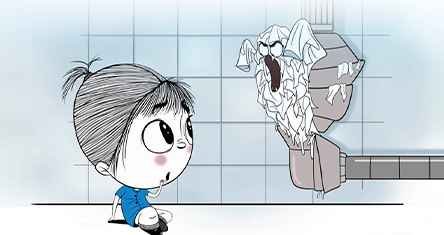Blog
DE MADRID Y DEL GRIFO
In our blog you will find tips to save water and learn how we work to convey it with the best quality to your tap in Madrid
DE MADRID Y DEL GRIFO
In our blog you will find tips to save water and learn how we work to convey it with the best quality to your tap in Madrid
FROM MADRID'S TAP

Suscríbete al blog
THE FIRSTWATER TOWER: HISTORY OF A SYMBOL OF CANAL
Built in the early 20th century, the FirstWater Tower fulfilled an essential role at that time: to carry water to the new neighbourhoods in the north of Madrid. Today, it’s an icon of Canal and the Chamberí district

Due to its location and its architectural structure, the First Water Tower is one of the distinctive
symbols of the company. Although its particular and attractive ornamentation is part of the decoration of the landscape in the Chamberí district, its original purpose was not precisely aesthetic. It was built at the beginning of the 20th century to solve a new problem with the water supply to some areas of Madrid.
As the city spread north, the new neighbourhoods were on high ground, making it difficult to provide an adequate water supply. The new urban areas of Madrid were higher than the bottoms of the existing tanks at the time and so the water was unable to reach them. The First Water Tower was the ideal solution to the problem as it allowed water to be supplied at sufficient pressure to buildings in the new neighbourhoods such as Cuatro Caminos and Salamanca.
The civil engineering work was carried out by Luis Moya and Ramón de Aguinaga based on a design initially proposed by Diego Martín Montalvo. The tower was 36 metres high and came into service on 15th November 1911. A pumping station was built next to it to pump the water up into the tank, a cylindrical structure with a capacity of 1,500 cubic meters. The design of the FirstWater Tower evolved away from the iron construction traditional at the time and opted for a style with Mudejar and medieval influences.
By the mid-20th century it had ceased to fulfil its original function and fell into disuse, and was
occasionally used for storage. This state of affairs continued until 1985 when the decision was taken to restore it for use as a cultural centre.
Eventually, the transformation was completed, and the First Water Tower became today’s Canal de Isabel II Exhibition Hall. The restoration and adaptation project was awarded the Europa Nostra Prize for the Conservation of Cultural Heritage in 1992.
The Canal Space opened its doors to the public in December 1986 with an exhibition about the late period of Salvador Dalí. Since it opened it has hosted works of all kinds, and before long it became a leading exhibition space, especially for pictures and photography. The most relevant photographic artists from Spain and abroad have exhibited there, especially as a result of collaborations with the famous ARCO fair and the PHotoEspaña festival.
See also
Suscríbete al blog
